The 10 Most Dangerous Beaches in the US—Revealed
From shark attacks to powerful surf zones to hurricanes, here’s what you need to know before diving in to the beaches that top the danger list
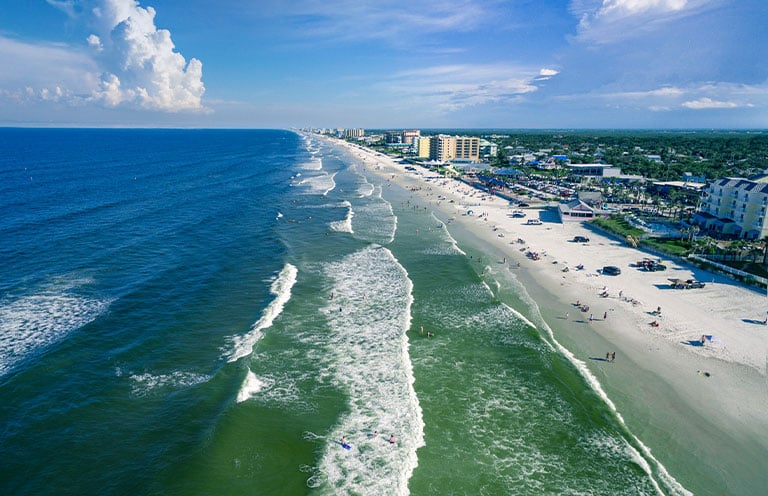

With its alluring warm climate and popular attractions such as Walt Disney World Resort and Universal Studios Florida, the Sunshine State remains a top destination for both vacationers and retirement home seekers alike. Florida provides plenty of beautiful sandy paradises from the Atlantic to the Gulf coasts, but with all of that beauty come potential dangers that may not be front-of-mind for most beachgoers.
After analyzing data from more than 500 beaches across the US, researchers at Tideschart, a tide and weather forecasting platform, found that all 10 of the most dangerous beaches are in Florida. Its rankings were based on three key risk factors: shark attacks, surf zone fatalities, and hurricane frequency.
Here’s how each threat factors into the ranking.
| Rank | Beach Name | State | Surf Zone Fatalities | Shark Attacks | Hurricanes | Final Score |
|---|---|---|---|---|---|---|
| 1. | New Smyrna Beach | Florida | 12 | 277 | 126 | 76.92 |
| 2. | Laguna Beach | Florida | 39 | 9 | 126 | 67.75 |
| 3. | Daytona Beach | Florida | 27 | 67 | 126 | 64.47 |
| 4. | Miami Beach | Florida | 13 | 17 | 126 | 46.49 |
| 5. | Indialantic Boardwalk | Florida | 9 | 30 | 126 | 44.64 |
| 6. | Cocoa Beach | Florida | 7 | 39 | 126 | 44.01 |
| 7. | Palm Beach | Florida | 7 | 35 | 126 | 43.53 |
| 8. | Miramar Heights Beach | Florida | 10 | 0 | 126 | 41.88 |
| 9. | Cape Canaveral | Florida | 6 | 19 | 126 | 40.75 |
| 10. | Jupiter Beach Park | Florida | 5 | 23 | 126 | 40.37 |
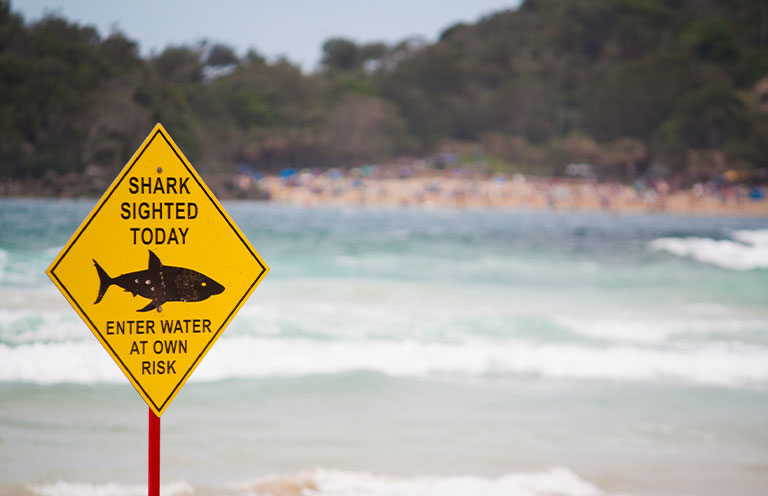
Shark attacks
Shark attacks aren’t just a plotline in scary movies; they can be a real-life horror. In fact, the US leads the world in the number of unprovoked shark attacks, according to a 2024 study by the International Shark Attack File (ISAF) from the Florida Museum of Natural History. Florida alone represents 30 percent of unprovoked attacks worldwide, according to the same ISAF study.
Even more unsettling: Half of these encounters happen when people are simply swimming and wading in the water. Cocoa Beach, Daytona Beach, and New Smyrna Beach rank among the most shark-active shores, with New Smyrna reporting a staggering 277 shark attacks on record.
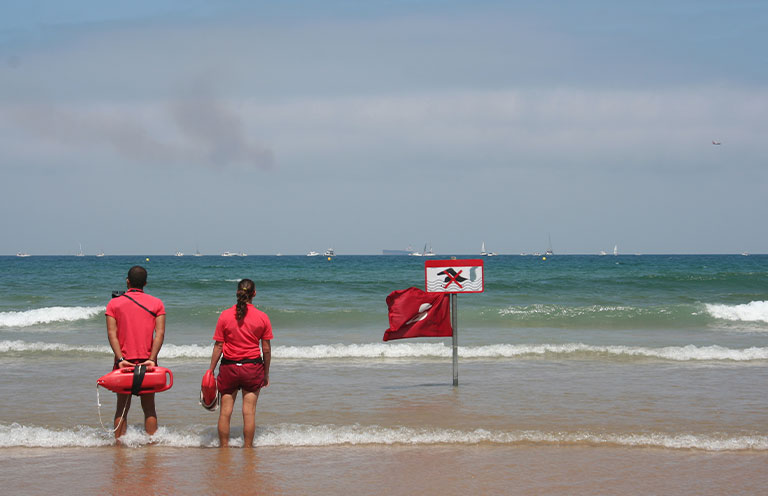
Surf zone fatalities
Surf zone fatalities often result from powerful waves and dangerous currents that can catch even the most experienced swimmers and surfers off guard. The most common hazards include rip currents, high surf, and sneaker waves. Each is formed by different natural forces.
- Rip currents - fast, narrow channels of water that flow from the shore back out to sea, usually formed when waves break strongly in some spots and weakly in others
- High surf - large, powerful waves typically generated by distant storms or strong winds
- Sneaker waves - unusually large waves that can suddenly surge far up the shore, often with little warning
Just last June (2024), four people tragically lost their lives to rip currents over two days in Panama City, Florida. Miami Beach, Daytona Beach, and Laguna Beach ranked highest for surf zone fatalities, with Laguna reporting 39 deaths.
To stay safe, it’s always best to swim at beaches with lifeguards on duty as they are specially trained to respond to emergencies and monitor water conditions that may not be obvious to the public.
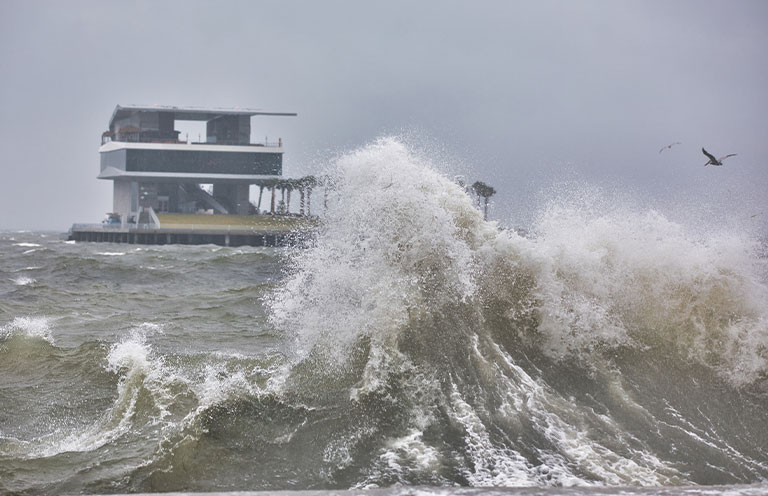
Hurricanes
Anyone familiar with Florida knows that hurricanes are a serious seasonal threat. The state’s hurricane season runs from June to November, with peak activity typically between August and October.
During this time, waters off the Atlantic and Gulf coasts heat up, creating the perfect conditions for tropical storms to form. When sustained winds reach 74 mph, tropical storms are officially classified as hurricanes—bringing destructive winds, rain, and dangerous storm surges.
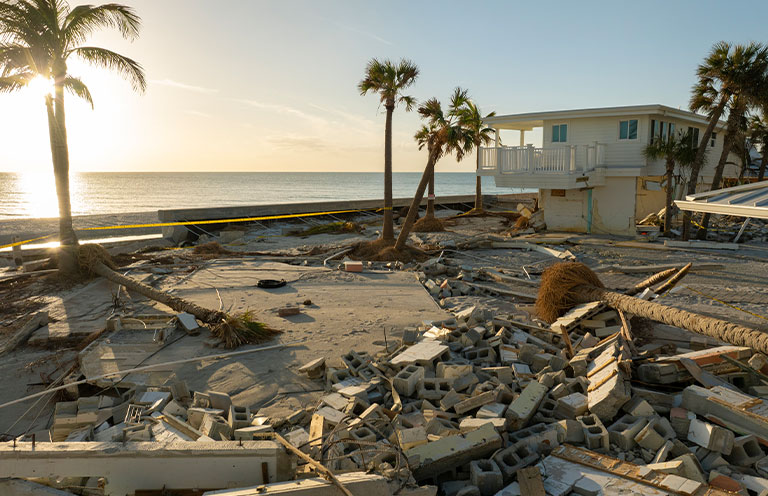
You don’t want to be anywhere near Florida beaches that are under the threat of a hurricane. Capable of causing significant damage both along the coast and inland, hurricanes can pose a threat to life, property, and the natural landscape. For beaches, specifically, hurricanes can raise sea levels, leading to flooding, erosion, and the scattering of debris.
Daytona Beach, Laguna Beach, and New Smyrna Beach—already known for surf zone dangers—are among the beaches hardest hit by hurricanes.
Stay informed daily during hurricane season by avoiding beaches under hurricane warnings, monitoring local weather alerts, and always heeding evacuation orders.
. . . . .
All of these risks and warnings shouldn’t lead you to give up the beach lifestyle, of course. But whether you’re planning a vacation or dreaming of retirement in the Sunshine State, it’s essential to understand the risks that come with Florida’s coastal beauty. A little preparation can go a long way toward keeping your beach days safe and worry-free.
